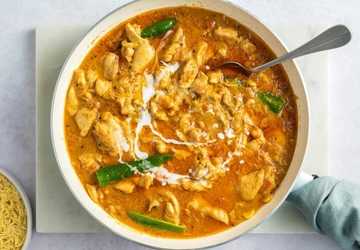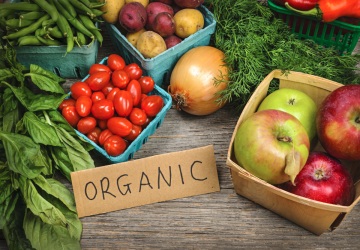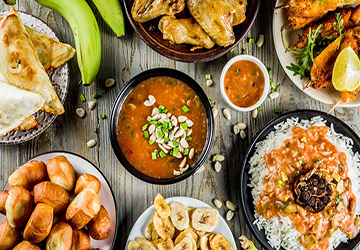Italy is praised for its culinary skills, in addition to its cultural treasures and historical sites. Italy boasts various flavors that have enchanted the world, from the snow-peaked mountains of the north to the sun-kissed south coasts. This Italian cuisine overview is a voyage through its cherished recipes, ingredients, and the undeniable passion Italians harbor for their food.
Italian Cuisine: A Tapestry of Diversity
At its core, Italian cuisine is about simplicity. It's about using fresh, high-quality ingredients to create dishes greater than the sum of their parts. The Italian food philosophy is underlined by a profound respect for ingredients, where the natural flavors shine, unsullied by excessive seasonings or techniques.
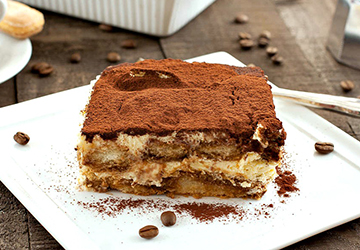
Pasta and Pizza: Symbols of Italian Gastronomy
Pasta and pizza aren't just dishes; they're experiences. Pasta's allure lies in its versatility. It can be simple, as in Aglio e Olio (garlic and oil), or complex, like the layered Lasagna. Each region offers a distinctive pasta dish, from the bustling streets of Rome with its Cacio e Pepe to the serene hills of Bologna with its Tagliatelle al Ragu.
Pizza, on the other hand, is a canvas of Mediterranean flavors. Then there's the pizza al prosciutto, drizzled with olive oil and adorned with the finest ham. Every bite of an Italian pizza is a blend of history, ingredients, and love.
Mediterranean Flavors: The Heartbeat of Italy
The Mediterranean flavors present in Italian cuisine are a harmonious blend of land and sea. Olive oil, fresh seafood, sun-ripened tomatoes, aromatic herbs, and luscious wines are the essence of this cuisine. These flavors don't just tantalize the palate but speak of a time-tested relationship between the Italians and their environment.
One can only speak of Mediterranean flavors by mentioning the Italian trinity: tomatoes, basil, and mozzarella. Be it in a Caprese salad or a simple bruschetta; this combination embodies the freshness and vibrancy of Italian food.
The Renaissance of Italian Desserts
No exploration of Italian cuisine is complete without a nod to its mouth-watering desserts:
● Tiramisu: Layers of Bliss
Tiramisu, which translates to "pick me up," is aptly called because each spoonful of its mix of coffee-soaked ladyfingers, silky mascarpone cheese, and a dusting of cocoa awakens one's senses. This masterpiece adds a touch of refinement to the dessert scene while tempting the taste senses and honoring Italy's passion for coffee.
● Cannoli: A Pastry with a Heart
The tiny pastry tubes known as cannoli, which are filled with delicious Ricotta cheese, represent the creativity and skill of Italian bakers. Cannoli, a typical Sicilian dessert, is a delightful example of combining rough, crispy shells with ricotta cheese inside.
● Panna Cotta: Elegance in Simplicity
Panna cotta, which translates to "cooked cream," is a delicate custard of cream, sweetness, and agar. As an arena for creativity, its silky-smooth consistency allows for a wide range of garnishes, from colorful fruit coulis to decadent butterscotch drizzles.
The Legacy of Italian Beverages
Italy's beverages are as iconic as its meals:
Espresso: A strong coffee shot that is the backbone of the country's cafe culture.
Limoncello: A lemon-infused liqueur from the Amalfi Coast, best enjoyed chilled.
Chianti: A robust red wine from Tuscany, perfect alongside a hearty meal.
Italian Bread: More Than Just a Side
Bread in Italy is an art:
● Ciabatta: Known for its crisp crust and soft, airy interior.
● Focaccia: Olive oil-rich and flavored with herbs, sometimes sprinkled with olives or tomatoes.
● Taralli: Ring-shaped snack bread, often seasoned with fennel or black pepper.
Cheese: Italy's Dairy Delight
A world without Italian cheese is unimaginable:
● Parmigiano Reggiano: Hard, aged cheese perfect for grating over pasta and pizza.
● Gorgonzola: Italy’s blue cheese variant, sharp and creamy.
● Ricotta: A soft cheese often used in pasta fillings and desserts.
Italian Culinary Traditions and Festivals
Italy's festivals often revolve around food:
● La Tomatina: Though it originated in Spain, Italy has its version where tomatoes turn into playful weapons!
● Sagra del Carciofo: Celebrating the artichoke in Ladispoli, a town near Rome.
● ChocoBarocco: A chocolate festival in Modica, Sicily, paying homage to its unique grainy chocolate.
Innovation in Italian Cuisine
Italian food has a rich history and heritage and is renowned for its classic flavors and recipes.
● Embracing Local and Seasonal: While regional bounty has long been honored in traditional foods, contemporary chefs are pushing the boundaries of this idea. They support sustainability and reduce their carbon footprint by obtaining ingredients from handicraft manufacturers and farms in the area.
● Vegan and Gluten-free: Modern versions of classic dishes cater to diverse dietary needs while retaining authentic Mediterranean flavors.
● Fusion of Culinary Cultures: Globalization has allowed different culinary traditions to mix and influence one another. Italian cooks are unafraid to explore flavors from other cultures, fusing fusion food with their native cuisine.
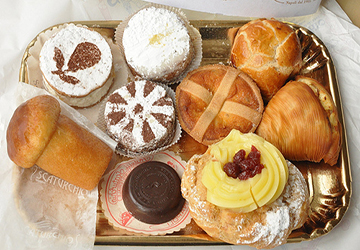
Regional Wonders: From North to South
● The North: Butter, Rice, and Rich Flavors
A unique variety of flavors and spices may be found in northern cuisine, inspired by neighboring nations and a colder environment. The desire for butter over olive oil is one of the defining elements of northern Italian cooking. This small change in fats gives food a rich, creamy feel. The area is particularly well-known for its risottos, luscious masterpieces created from rice, such as Arborio or Carnaroli.
● Central Italy: Simple Ingredients, Timeless Dishes
Here, the emphasis is on using high-quality products prepared in a way that brings out their natural flavors. A delicious variety of foods from Tuscany, Umbria, and the neighboring areas are available, and they perfectly express the natural beauty and rustic appeal of the region. Ribollita is a well-known dish that best represents the culinary philosophy of central Italy. Ribollita, which translates to "reboiled," is a filling vegetable and bread soup.
● The South: Seafood Sensations and Mediterranean Flavors.
The seafood is plentiful on Italy's southern coasts, and the cuisine from this area is nothing short of extraordinary. Spaghetti alle vongole is one dish that perfectly captures the flavors of Southern Italian cooking. In this pasta meal, soft clams are cooked with garlic, olive oil, and white wine to create a flavorful mélange
The Heart of Italian Cooking
The Italian cuisine overview includes olive oil as an essential part. Not merely a cooking medium, it embodies the essence of Mediterranean flavors. Whether drizzling over pasta and pizza, frying, or simply as a dip for fresh bread, this golden elixir enriches every dish. Revered for its health benefits and diverse regional varieties, olive oil remains the heart and soul of Italian gastronomy.
Deep-rooted in Italian tradition, olive oil production is an age-old craft. Each region offers its unique flavor profile, from the hilly groves of Tuscany to the sunlit fields of Puglia. Cold-pressed to preserve purity, this Mediterranean flavor champion imparts richness, elevating Italian dishes beyond mere sustenance to a sensory celebration.
Conclusion
Understanding the soul of Italy means starting a trip through the Italian culinary delights. Italian cuisine celebrates life, history, and nature, from the universally beloved pasta and pizza to the varied regional specialties. The intertwining of Mediterranean flavors and local traditions results in a gastronomic experience that’s both rich and timeless. Whether you're savoring a risotto in Lombardy or biting into a crunchy cannolo in Sicily, the spirit of Italy is always present, reminding us of the simple joys of food and life.



